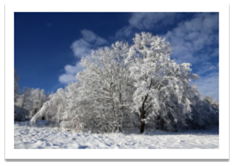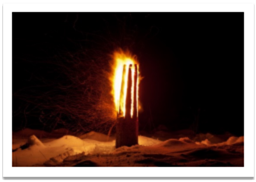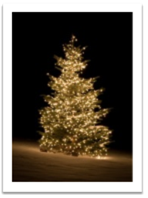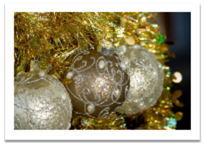
|
|

According to Ancient Astronomy: An Encyclopaedia of Cosmologies and Myth: Throughout history, new Christian churches have been placed on the sites of “pagan” temples. Indigenous pagan religious festivals were timed or relabelled as Christian religious festivals.
Some examples are the winter solstice pagan festival being time with Christmas and the summer pagan solstice festival being time with the feast of St. John. 131
There is no reference at all within the Bible of the exact day or time of year that Jesus was born. 109
The Catholic Encyclopaedia states: “Christmas was not among the earliest festivals of the Church. Irenaeus and Tertullian omit it from their lists of feasts ... The first evidence of the feast is from Egypt.” 132
 As well as the birth of many pagan gods (Attis, Mithras, Tammuz etc.), the Winter Solstice occurred on the 25th December in the ancient Julian calendar. A five-day pagan harvest festival of Saturnalia devoted to Saturn, the god of agriculture occurred shortly before the winter solstice. The pagans celebrated it with gift exchanges, feasting and excesses. 133
As well as the birth of many pagan gods (Attis, Mithras, Tammuz etc.), the Winter Solstice occurred on the 25th December in the ancient Julian calendar. A five-day pagan harvest festival of Saturnalia devoted to Saturn, the god of agriculture occurred shortly before the winter solstice. The pagans celebrated it with gift exchanges, feasting and excesses. 133
“Yule” amongst the Nordics was also the celebration of the winter solstice, a celebration of a sun-god. 99 The sun-god that is reborn of the virgin goddess. The god is represented by the sun which “returns” after this darkest night of the year to again bring warmth and fertility to the land. 134
The many customs associated with Yule are of pagan origin, these include candles, decorated trees, the Yule log, wreaths, pine bough, hot mulled alcoholic drinks, carolling, costume plays, mistletoe. 135 Christmas adopted these customs.
Yule is a twelve-night long celebration which Christmas later adopted. 134
Christmas was banned in England until 1660. 136 The Puritans (English Protestants) also battled for centuries trying to ban Christmas through the states in America, and only up until 1870 it became a legally recognized federal holiday. 137 It was considered pagan ungodliness, contained superstitious customs and even linked to Salem’s witchcraft. The Puritans argued that it was in compliance with the Pagan saturnalia and the manner of Christmas being observed is highly dishonourable to the name of Christ. 136
The Christmas tree is an old pagan custom and common to most cultures. The Bible refers to this pagan custom and warns you not to follow this custom : “The evergreen tree became the symbol of his (Tammuz) never ending life and birth at the winter solstice”. Dr. Floyd Nolen Jones, Chronology of the Old Testament 138 |
|
| The roots of the trinity | <<< Prev | Next >>> | Easter is a pagan celebration |



